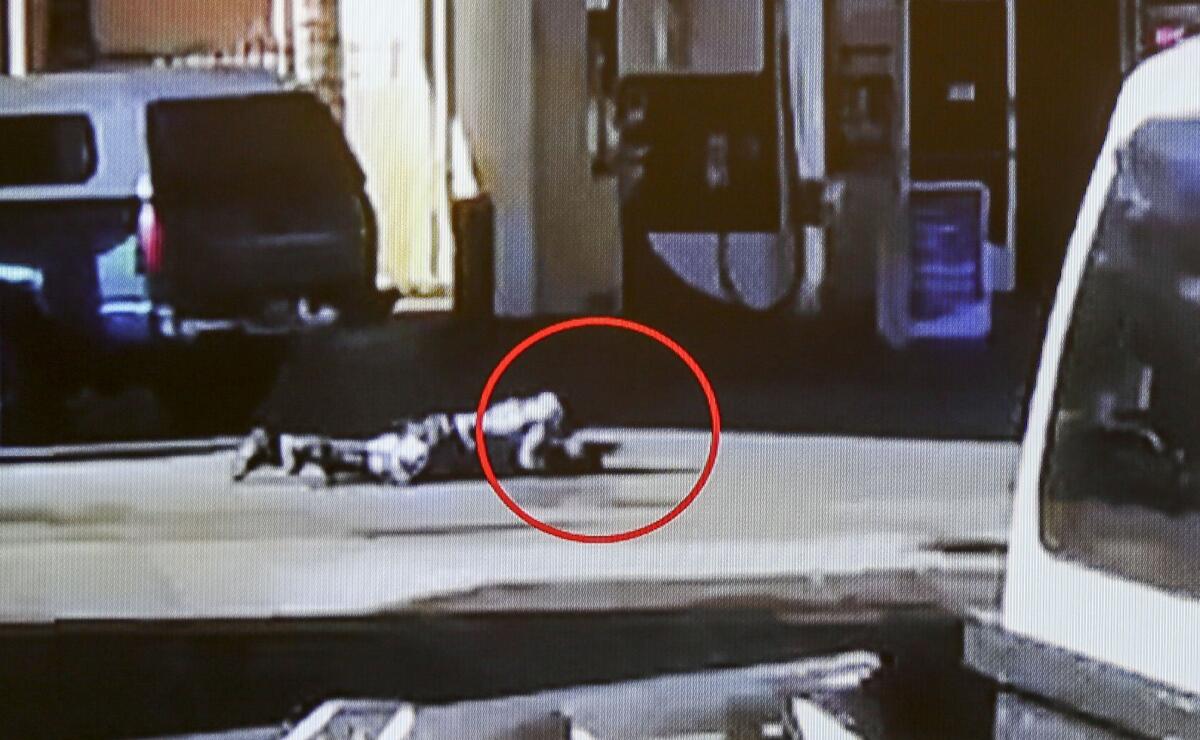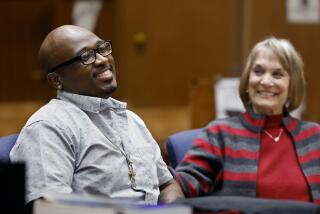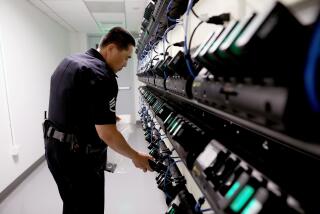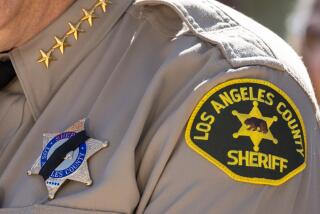Editorial: Lynwood shooting demonstrates the limits of video evidence

In this image made from security video footage provided by the Los Angeles County Sheriff, Nicholas Robertson is stretched out on the ground with a gun in his hand after he was shot by Los Angeles deputies on Dec. 12 in Lynwood.
Consider this scene: An agitated man holding a gun strides toward patrons at a gas station while ignoring the demands of sheriff’s deputies to stop. After repeated warnings, and with little choice, the deputies shoot.
Or this one: Two deputies get out of their patrol cars, pull their weapons and shoot a man from behind. He falls. He tries to crawl away — but the deputies keep firing anyway, until he is dead.
Add one more angle: People hear a commotion and leave restaurants, shops and cars to watch the incident, and to record it on their phones. They gather several videos from slightly different vantage points, each providing a bit of information but none containing the full story.
All of these descriptions apply to the fatal shooting of Nicholas Robertson in Lynwood on Saturday by Los Angeles County sheriff’s deputies. The incident was similar to many recent such encounters in that it was captured on video, allowing viewers around the world to see portions of it almost instantaneously. Eyewitnesses were multiplied millions of times.
But video has its limits. It won’t confirm or refute the reports of what happened before the phones came out and starting recording, or before the deputies and Robertson came in range of the cameras. It can’t tell us, for example, whether a man fired several shots into the air before the deputies arrived, as the Sheriff’s Department has reported, or whether Robertson was that man.
Video has played a central role in public anger over police tactics since George Holliday tried out his new video camera by recording the arrest of motorist Rodney G. King on March 3, 1991. From that time, but increasingly in the last two years, Americans outside law enforcement have come face to face with the brutality that is often necessarily at the center of police use of force. One lesson is that police do dangerous and often disturbing work in the name of keeping the rest of us safe. Another is that despite their sacrifices on our behalf, and despite the fact that few officers intentionally abuse their power, they can often do better.
The sheriff’s investigation into the Robertson shooting will take time and will require patience on the part of the public. But it will also require a degree of transparency that has yet to become second nature to the Sheriff’s Department, even though new Sheriff Jim McDonnell has been on the job for a full year.
It helps some that there is now in place an inspector general who can track the sufficiency of the sheriff’s internal investigation and report on it — but to whom? No sheriff’s oversight body has yet been established, despite months of hearings and a recommendation to the Board of Supervisors by a county panel designing such a commission. The board is expected to sign on to an agreement Tuesday for sharing internal sheriff’s information with the inspector general — not explicitly but most likely in lieu of subpoena power — and it’s a step forward. But the process is moving far too slowly. Confidence in law enforcement depends on a system of accountability designed for the modern era, in which police actions are seen, scrutinized and questioned in no more time than it takes to pick up a cellphone and start recording.
Follow the Opinion section on Twitter@latimesopinion and Facebook
More to Read
A cure for the common opinion
Get thought-provoking perspectives with our weekly newsletter.
You may occasionally receive promotional content from the Los Angeles Times.






